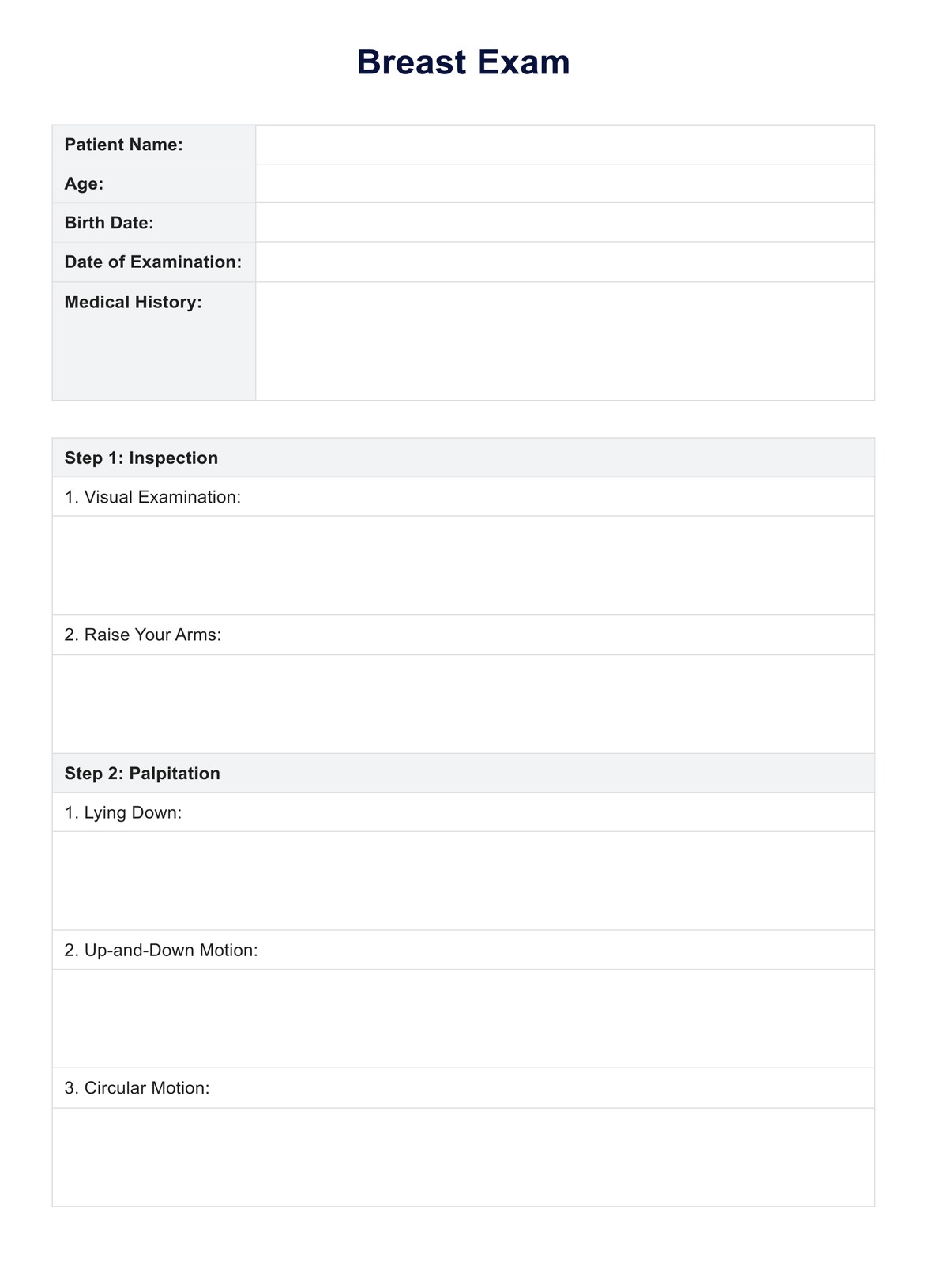The 5 P's of breast exams include position, palpation, pattern, pressure, and perimeter.

Breast Exam
Use Careapatron's PDF example of a breast exam guide to help you perform a thorough breast self-examination. Download this free resource now.
Breast Exam Template
Commonly asked questions
The correct way to examine breasts involves a systematic approach, including visual inspection, raised arms assessment, and manual palpation in circular motions, covering the entire breast and underarm areas.
To examine a patient's breast, use a combination of visual inspection, raised arms examination, and manual palpation. Follow a consistent pattern, adjusting pressure as needed, and thoroughly assess the entire breast and underarm region.
EHR and practice management software
Get started for free
*No credit card required
Free
$0/usd
Unlimited clients
Telehealth
1GB of storage
Client portal text
Automated billing and online payments











